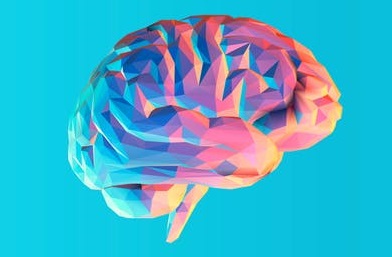
By Dr. John R. Mishock, PT, DPT, DC
In parts I through III of the “Brain Training, The Key to Developing Sports Skill” we learned how the brain and nervous system function with the musculoskeletal system to create proper movement patterns that can enhance sports performance. In this article I will outline key concepts that will help the coach or trainer implement scientific approach to training.
When learning a new movement or making changes in a faulty movement pattern these 12 steps below can be used to optimize training.
1. “Chunk” the movement: Break down the individual movements of a task into its component parts. Once those individual movements are perfected build them back into the overall activity. For example, work on just the wrist movement while shooting the basketball then build it back into the basketball shot.
2. Slow-to-fast: Begin the novice movement in a controlled slow manner. Once the movement is learned add speed.
3. “Feel-it” (Kinesthesia): Use the sense of “touch” and “feel” to optimize learning of the movement. For example, ask the athlete to feel the movement when done correctly. Follow this with asking them to repeat the movement with that same “feel”.
4. Subjective-error-estimation: The athlete should be able understand the mistakes that are being made and be able to correct them on their own. For example, ask the athlete what they have done right or wrong when performing a task.
5. Less verbal feedback is more: Often coaches talk too much during training. The athlete can only digest a small amount of verbal communication or feedback back. Let the athlete use subjective-error-estimation to tell the coach what has gone wrong.
6. Intrinsic vs extrinsic feed-back: Start with intrinsic feedback in the novice athlete. For example, “Bend the wrist while shooting a basketball.” Combine it with extrinsic feedback, For example, “Follow through by putting your hand in the basket.” Realize that the higher level athlete will do better with extrinsic feed-back.
7. Salient and Practical: The training should resemble the ultimate task that needs to be performed during the game. The training Activity should have high cross over to game specific tasks. For example, if rehearsing dribbling a basketball, work to being able to do that with a defender in a game specific manner.
8. Stable-to-unstable: Progress the activity from stable to unstable movement. This could be adding props or challenges to the movement.
9. Predictable-to-unpredictable-movements (reactive): Progress the activity to game like movements at game speed, reading-and-reacting to a stimulus or defender. The ability to read-and-react is the difference between a novice and elite athlete.
10. Dual-task-practice: This is when a higher level athlete performs one task requiring cognitive processing while simultaneously engaging in another underlying motor activity. This type of training forces motor learning and planning toward a state of automaticity. For example, shooting basketball free throws while performing multiplication or carrying on a conversion.
11. Automaticity: This is when conscious motor planning becomes unconscious or automated. This is the ultimate goal of any movement pattern. For example, the basketball shot is performed perfectly without thinking of the specific mechanics.
12. Confidence: Nervousness and self-doubt can override the existing motor program of automaticity. Game pressures can make an elite athlete perform at a novice level, this is known as “choking”. Choking happens when the athlete begins to “think” vs “react”. To combat choking the athlete should focus on the task-related goal not the game situation they are confronting. This allows the brain to revert back to automaticity. The contrast to “choking” is being in the “zone”. Being in the “zone” is when everything is going well with seemingly minimal effort. The “zone” is the highest level of brain automaticity.
Following the above mentioned teaching principles can help the coach or trainer optimize athletic movement patterns and or skill performance.
We can help!
Relieve pain and increase function.
Call for a FREE Phone Consultation 610-327-2600.
Visit our website at www.mishockpt.com.
Call 610-327-2600 to Schedule your appointment today, at one of our 6 convenient locations in Skippack, Gilbertsville*, Barto, Phoenixville*, Pottstown, and Limerick* (inside the Spring Valley YMCA).
Appointments available 7:00am to 8:00pm, ALL locations, most days!
*Saturday Hours
Dr. Mishock is one of only a few clinicians with doctorate level degrees in both physical therapy and chiropractic in the state of Pennsylvania.
